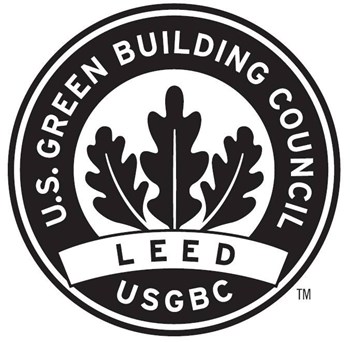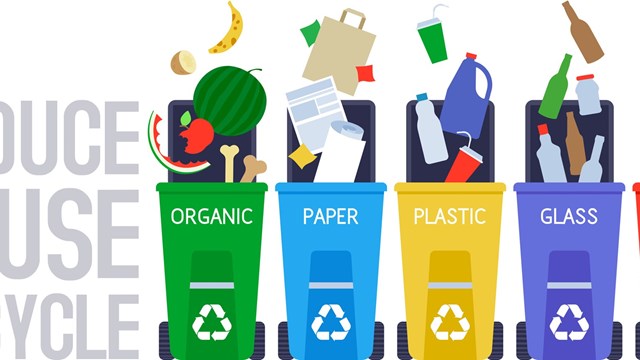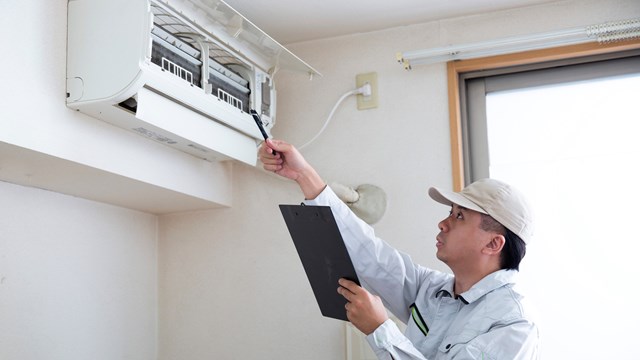
There are two ways, and only two ways, to balance a budget: increase revenue or decrease spending. Whether you’re the treasurer of a co-op board or the President of the United States, those are the only two levers at your disposal. Energy is no different. With the global population soaring, with oil reserves plateauing just as new markets are emerging in China and India—and with the climate changing at an unsustainable rate—the need to both increase sources of energy and conserve the ones we have has never been more vital.’
The Gold Standard
Since it was first implemented 20 years ago, the US Green Building Council (USGBC)'s LEED certification has been the gold standard when it comes to measuring a building's environmental conscience. Being LEED certified at any level means that much thought and planning was put into a building before ground was even broken to begin construction. LEED buildings have an array of advantages over non-certified buildings—some of which are wallet-based, some of which are body- and health-based. The Massachusetts Department of Environmental Protection William X. Wall Experiment Station in Lawrence, The United Teen Equality Center in Lowell, Massachusetts, The Harvard University Peabody Terrace Graduate Commons in Peabody, Massachusetts, The Sullivan Construction Headquarters in Bedford, New Hampshire and the Harvard Graduate School of Education’s Guttman Library are all LEED Platinum, the highest level of LEED certification possible. Only six percent of LEED buildings in Massachusetts have received this honor.
“There are numerous advantages to green building construction,” says Brian Gallagher, Director of Business Development for Sullivan Construction Inc., in Bedford, New Hampshire. “There are obvious benefits to the planet, such as using fewer natural resources and minimizing impact on the environment. Utilizing renewable and recycled materials, reducing landfill waste, reducing lighting power density, and limiting energy and water usage are good examples. However, the economic benefits, both short and long term are great. We have seen decreasing costs and an increased payback in green construction during the past several years. HVAC and lighting expenses can be drastically reduced with energy savings sometimes approaching 40 percent over typical systems. Payback on incremental costs can be realized in some cases in under two years. Also, green construction can be a very strong marketing feature for property owners and tenants.”
What is LEED? Why is it the golden standard? How can boards go about making their buildings LEED-certified? And would they want to?
In 1993, a troika of prescient industry experts—Rick Fedrizzi, David Gottfried and Mike Italiano—founded the U.S. Green Building Council, to promote sustainability in building and construction. They gathered representatives from a wide swath of architecture firms, and set to work on a system to rate buildings according to how “green” they were. Seven years later, the Leadership in Energy and Environmental Design—LEED—building certification system was unveiled, consisting of a series of criteria to quantify how energy efficient buildings are.
“In the early days LEED was a program that attracted architects and then engineers and then designers,” explains Rick Fedrizzi, CEO and President of USGBC. “And when you look at LEED today and the audience around the world that we are attracting it’s astounding. We all come together of the common thread: sustainability. I think LEED does that better than any other organization out there. The idea that we can better understand our world, energy, water or waste materials innovation, and understanding all those things and yet applying them to our lives so that we become more productive in our daily life and in our daily business and to ultimately leave a better world behind.”
“It’s expanded since its inception,” says David Ahrens, president of the Association of Energy Engineers. “Right now, it consists of nine different ratings systems.” The nine systems represent nine different categories of buildings. The ones relevant to residential buildings are:
Core and Shell: “Not what’s inside,” Ahrens explains, but the exterior of a building and its central systems.
Existing Buildings: Operations & Maintenance (EBOM) A green HVAC system and state-of-the-art windows go a long way
By the Numbers
Each category is broken down into a series of indices, and each index is rated. The score is then aggregated, and the result is a number from 1-100. Forty to 49 is LEED-certified; 50-59 is silver; 60-79 is gold; and above 80 is platinum, Ahrens explains.
On the residential side in New England, the best-known building is undoubtedly The Macallen Building in Boston. Along with its prominent triangular silhouette on the Boston skyline, the Macallen is recognized for its green roof system, and for its construction that involved recycled, eco-friendly and sustainable building materials. The luxury condominium has earned Gold LEED certification.
Newer to the Boston scene is the Silver LEED-Certified Clarendon, built with at least 10% recycled content. Adding to its green nature is the fact that more than 50% of the waste created during its construction was recycled, and more than 20% of the materials used in the building were sourced within 500 miles of the Back Bay construction site, a move that lowered transportation impacts and supported the local economy.
And in Portsmouth, New Hampshire, 233 Vaughn—built in the “new downtown”—is a Gold LEED-certified mixed-use property that includes luxury condominiums along with retail space.
This past February The 36,000 square-foot Harvard Graduate School of Education’s 2012 renovation of Gutman Library’s first and second floor received LEED Platinum certification. The library’s goal is to create a campus center to serve as a natural hub and campus gathering space for HGSE faculty, staff and students. A few highlights of the renovations include: 96 percent of the total percent of construction waste was diverted from landfill, 36 percent reduction in annual water use about 13, 950 gallons a year.
LEED EBOM recognizes superior performance in five core categories: sustainable sites; water efficiency; energy and atmosphere; materials and resources; and indoor environmental quality. It also recognizes innovation in operation and designates certain priorities based on a building’s geographic location. This is important, because most residential buildings seeking LEED certification are existing buildings, and this will strive for LEED EBOM certification
Getting Certified.
Another organization, the third-party Green Building Certification Institute, provides the certifications. “It certifies individuals as LEED-accredited professionals,” says Ahrens. Certification involves learning about the LEED system, about conservation of building resources, and about how to make existing buildings more green.
Not long ago, this sort of environmental movement was the provenance of dreamers and hippies. Now it is something that unites people from across the political divide.
“The idea that you could be green in a cost-effective way is very compelling,” says Ellen Honigstock, the USGBC’s director of construction education and an architect. Once the organization showed the way to achieve energy efficiency, the idea took off.
To green your building, Honigstock says, “Start to figure out what you already have, how you perform.” The initial steps involve analyzing the usage of energy and establishing benchmarks. “Benchmarking is when you calculate the amount of energy used,” she explains. Then, the professionals get involved. “Architects do an analysis—how to improve windows, lights, heating.” The architects and engineers, she says, will provide estimates on what the upgrades to existing buildings will cost. “There are government initiatives to offset the costs,” she says.
“It’s a fairly expensive process,” she concedes. The up-front price tag is one of the barriers to a wider acceptance. Boards look at the capital investment and get nervous. The idea that a building should spend money now to plan for the future is, in many cases, not the way boards tend to think. Budgets are hard enough to calculate without start-up costs.
“There are not many drawbacks to green construction to speak of,” adds Gallagher. “The initial investment, while continuing to decrease remains a potential roadblock in some cases. We are seeing many building owners choosing to pick and choose the most appropriate green building features to invest in given their budgets and potential energy savings. But with the payback period becoming shorter, this roadblock is becoming less of an issue.”
According to efficiency experts the other hurdle is lack of knowledge. In most co-ops and condos, the property managers are the agents of change. They’re the ones who spot trends and advise buildings to try new things. But property managers tend not to be among the many professionals who hold LEED accreditation.
“You know what building managers do. They’re busy. They don’t have time,” Honigstock says. “Boards have to ask managers to do it,” to get the LEED training. “Request an agent to get trained and make the changes,” she advises.
The push for green buildings has happened at a stunning rate of speed. LEED was still in the larval stages 20 years ago. The ratings systems have only been around for 13 years. The Green Building Certification Institute has only been awarding certifications for five years—a blink of the eye. That so many buildings have gone green is a great boon for the environment. That so many have not followed suit is cause for concern. The climate is changing faster than our mores. We’re running out of time.
Greg Olear is a freelance writer and a frequent contributor to New England Condominium.






Leave a Comment